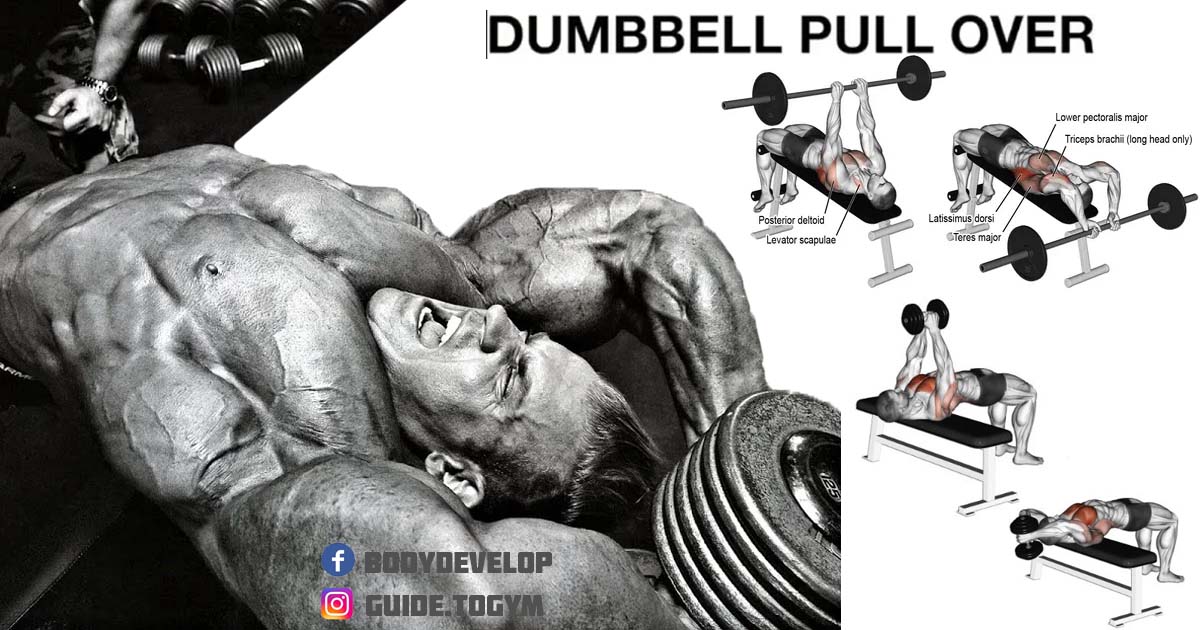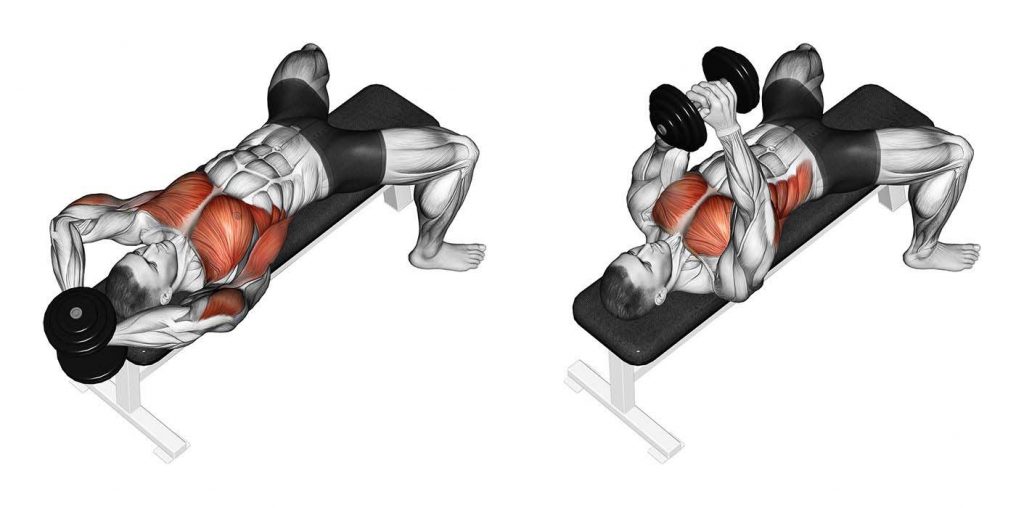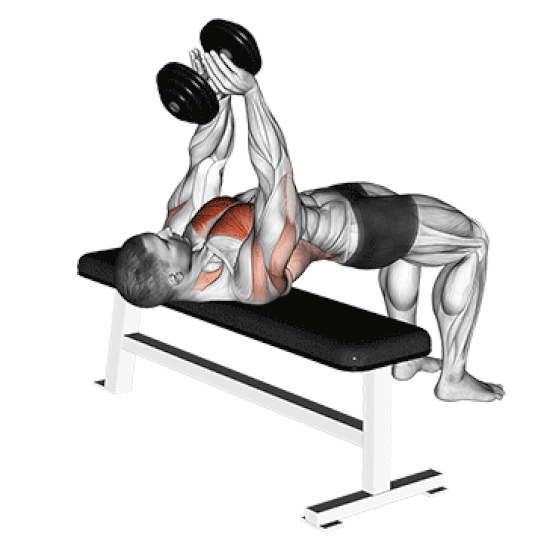How to Do the Dumbbell Pull-Over for a Big Wide Back and Chest Muscle
The Dumbbell Pull-over exercises help to work the pectoral muscles, affect the widest back, and promote chest expansion if you perform it at a young age.

[wp_ad_camp_1]
Let’s look at this exercise in detail and talk about the different variations for a pull-over with a dumbbell. And finally, we will analyze the nuances that are important to consider to avoid typical mistakes and get the maximum result.
Features of the Dumbbell Pullover
It is not possible to pump the chest using a pull-over exercise alone.
Why does it?
Dumbbell pull-over has a different goal and is more of an auxiliary character. Doing the exercise makes sense in conjunction with other exercises for the chest such as Cable Fly Pec Deck, as it exercises to help stretch and, most importantly, increase the chest’s volume.
The effectiveness of such exercises varies with age. When the bones and cartilages of our skeleton continue to grow and form at a young age, we can achieve the most impressive results. The indicators vary, depending on the body, but on average, men grow to 20-27 years and women to 18-20.
Benefits of Dumbbell Pull-Over
During exercise, the following are loaded:
- Large pectoral muscles;
- The widest back muscle;
- Triceps (mostly a long head).
Also, front toothed and intercostal muscles are additionally involved, the diaphragm is working, the shoulders and brachialis serve as assistants.
[wp_ad_camp_2]
Variations of Dumbbell Pull-Over
First of all, we will consider the technique of pull-over with the dumbbell, as the most common and popular variation train chest muscle.
Tips:
The exercise is carried out lying on a horizontal bench. Often you can find variation lying down or across the bench. It is believed that in the first case the muscles receive a greater load and are stretched out better, so we will consider it. You can navigate by your own feelings and choose the best option for yourself since the differences in technical are minimal.
Another possible variation is the straight or bent arms of the elbows. This variation with a Straightening of the hands mostly excludes triceps from work, shifting the emphasis to the top of the chest and back muscles: the broadest, the diamond-shaped, and the large round.
The Classic Version of a Dumbbell Pull-Over
The dumbbell pullover can pump the chest, back and serrated muscles at once. The pullover is one of the most favorite exercises in bodybuilding, he loved to do “Mr. Olympia” winner Arnold Schwarzenegger.

Performing a dumbbell pullover while lying on a bench with your whole body is a basic exercise for entry-level athletes.
Instructions
- Takes a bar dumbbell both hands
- Raise the dumbbell on outstretched arms, exhale
- The dumbbell is lowered slowly, a deep breath is taken
- At the lowest point, the student pauses for 1.5-2 seconds and rises
- A dumbbell pullover lying on a bench should be done in 2-3 sets of 10-15 reps
[wp_ad_camp_4]
Dumbbell Pullover Alternatives

How to Do:
Step 1:
- Lying across the horizontal bench. In other words, your body is perpendicular to the bench.
- The upper part of your backrest the bench, the legs rest on the floor and are bent at an angle of just over 90 ° – a kind of “bridge”.
- Grab the dumbbell with both hands (ideally – ask the spotter to give you a dumbbell ) bottom of a dumbbell.
- The bar dumbbell at that passes between the crossed thumbs, the palms are directed away from him, the second disc hangs freely.
Step 2:
- Your look concentrate on the dumbbell also arms slightly bent at the elbows. This will be the starting position.
- On the breath, slowly and under control, lower the dumbbell back and down behind the head, feeling the pectoral muscles stretch during a breath.
- In the process of movement, only the shoulder joints work, if you move the elbows, then you will get something similar to the French press (or Tricep Overhead Extensions).
- At the lower point, feel the maximum stretch of the chest.
Step 3:
- Try not to raise your pelvis (you will certainly want to do it) – this will reduce the effectiveness of exercise.
- Raise the dumbbell to its starting position, making an exhalation and feeling a contraction of the muscles.
- Do the planned number of repetitions (for beginners 10-12 repetitions with a weight not more than 10 kg).
Conclusions
Now you know about dumbbell pull-over everything, well, or almost everything to decide whether to include this exercise in training. Successes and new sport achievements!














































